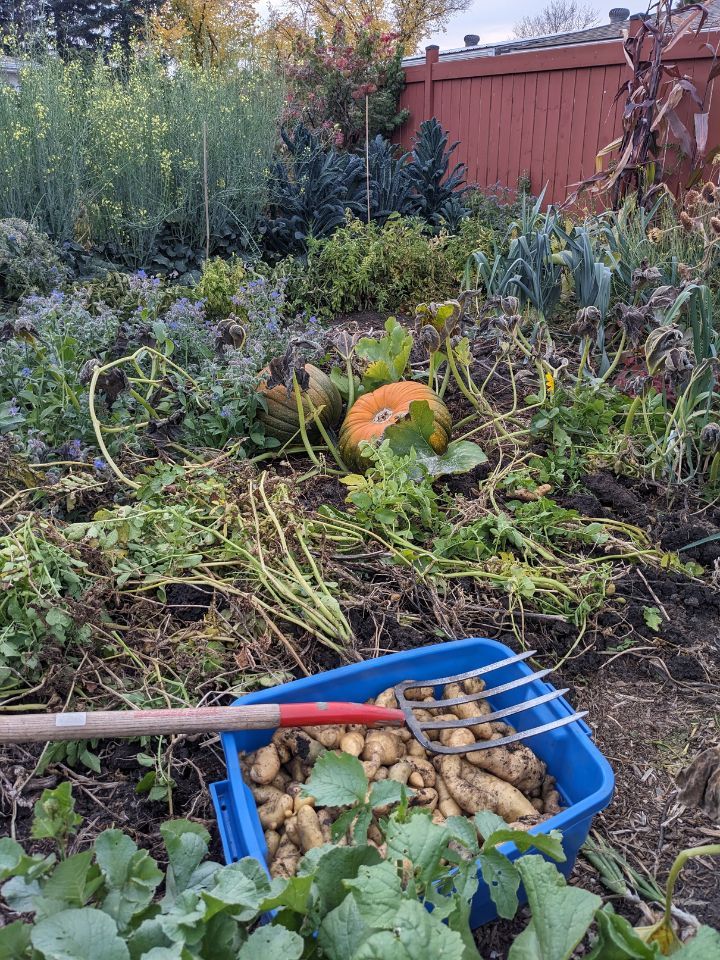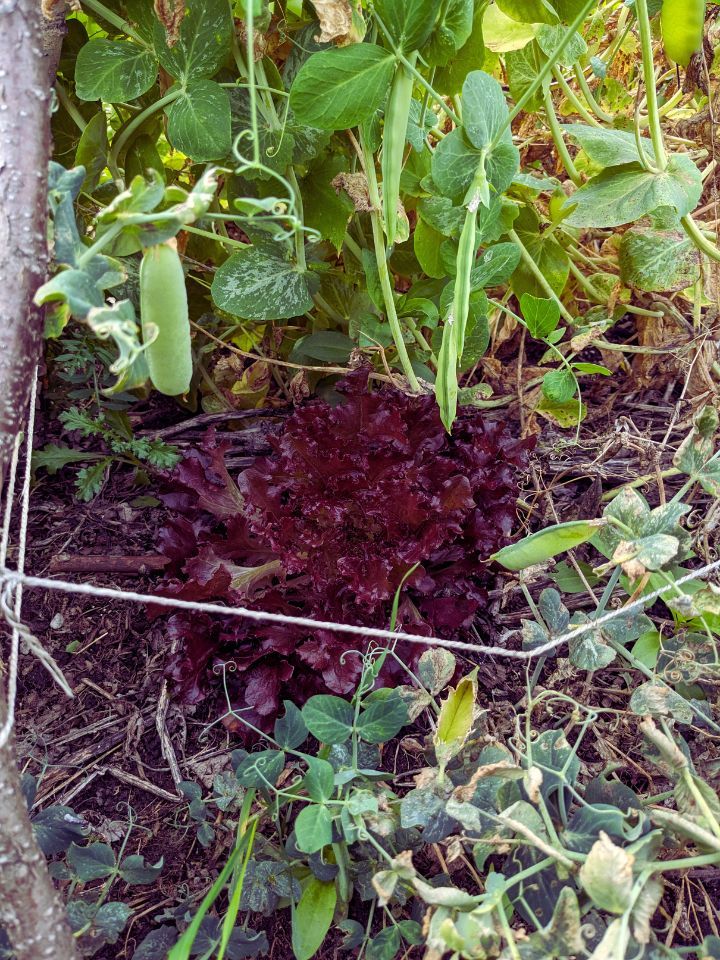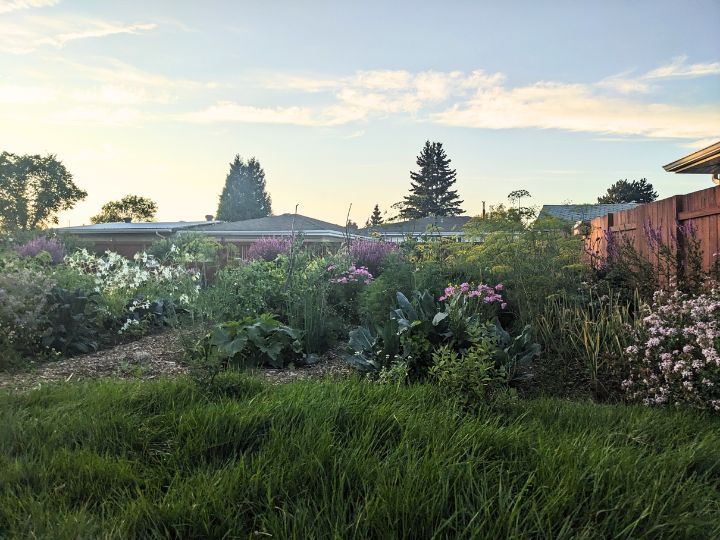Ideas for Interplanting in the Vegetable Garden

Interplanting (or intercropping) is simply growing several different types of plants in the same area.
Picture acres and acres of corn, or wheat (or where I'm from canola) and you have an idea of what interplanting is not. With interplanting, you fill out your planters with more than one kind of plant, creating diverse garden beds with many layers.
Why interplant? Here are some good reasons:
- Increase the number of types of vegetables you grow in your garden.
- Maximize your growing space by filling it more completely. Plants that are different heights, shapes or sizes can be put together to make the best use of your growing space.
- Make better use of your growing season. Slow growing crops that have a long growing time could take up a lot of space for a good chunk of the garden season. By interplanting fast growing plants between those slow plants, you can get a harvest from that space before your large crop is ready.
- Companion planting. Some plants actually grow better when planted with other, complementary companion types of plants. Ideally, some of your interplanting will be done because it provides some advantage to at least one of the plants involved!
- Keep the soil covered. This in turn keeps the organisms working in the soil active and healthy, leading to healthy soil and better growing for you. The diversity of plants achieved with interplanting is also good for the soil.
- Interplanted garden beds are attractive, or should be anyways. They allow you to add a lot of texture and different layers to your garden and you can easily incorporate flowers for color.
This year, more than last year, I tried to always have a mix of plants in each garden bed. What I ended up with was a pretty wild looking garden, which might not be to everyone's taste, but that I really liked.
It almost felt like I was foraging every time I went to the garden. I learned where the patches of cilantro were, where the fastest growing basil was, which squash were ripening. While it isn't the most efficient way to grow and harvest vegetables, it forced me to pay close attention to the garden when I was wandering around out there and it also meant I rarely had too much of one vegetable to harvest at one time. Having a greater number of smaller plantings, I could usually pick a couple of whatever I was looking to harvest, while leaving some of the same kind, time to grow more.

Your garden doesn't have to be so wild if that's not your style, but interplanting can still be used to maximize your space and create a beautiful garden.
Some easy and adaptable crops to grow with interplanting are lettuce, arugula, beets, green onions and spinach. These are all quick growing, low to the ground plants that can be slotted in wherever you have space.
Here are some examples of interplanting from my garden this year:
- Corn interplanted with squashes and pumpkins. This is 2/3 of the classic three-sisters planting, the other missing 1/3 being vining beans. I will try the complete planting next year, but the corn and squash on their own worked fairly well. The corn grows straight up, while the squashes keep the ground around it covered, conserving water in the soil and preventing weeds from getting established.
- Peas with lettuces underneath the trellis. I grew two full rows of snow peas on a simple, teepee-style trellis this year and made some use of the space in the middle of the bed by planting a few lettuces. These lettuces had the advantage that they were shaded from the heat of the summer, but also grew slower, though I did get some decent harvests from them that I wouldn't have had otherwise.

- Tomatoes, broccolini, kale and herbs. I have one extra wide bed and I really jam packed it this year. I did a row of bush tomatoes, planted next to a row of kale and broccolini, with a mix of herbs planted in between. This was a great use of space and apart from some of the herbs getting shaded out, the harvests from each of the crops were good.
- Flowers planted everywhere. For me this year, it was mostly nasturtiums, dill, borage and self-seeded cosmos. The flowers were great for attracting pollinators for my other vegetables and they also looked nice. I should have been more ruthless removing some, as the cosmos in particular got a bit out of control but I will always try to include some flowers in my vegetable garden.

- Baby leaf green mix between cauliflowers. Cauliflowers are a slow growing crop, so planting some quick growing baby greens let's you get a harvest before the cauliflowers size up and take over the space.
- Cabbages between onions. My idea behind this pairing was that the onions would help deter pests from the cabbages. I'm not sure it really worked, as the cabbages near the onions had more or less the same amount of pest damage as the ones planted elsewhere, but worth exploring anyways. I did find that spreading out the cabbages around your garden, rather than having them all in one spot, is helpful in managing pests.
I'm still figuring all this interplanting out and there's a lot to learn and test! You want to make sure you understand how your crops will grow before you start pairing them together. By knowing the timing of when crops will be ready to harvest, how big they'll get, their growth habit and what you are trying to achieve with interplanting, you'll be able to to come up with your own successful garden combinations.
It's also important to find a balance to be successful with interplanting. You don't want to jam too many plants in too small a space, as you end up with them competing against each other or starting to get diseased. However, when you do find a good plant combination and space things properly, it's a really great way to make the most of your vegetable garden space.
If you want to learn more about interplanting, check out this video from No-Till Growers on Companion Planting vs. Interplanting. They have posted a few videos on this subject and all are in-depth and well-researched, coming from Jesse's first-hand experience as a farmer.
If you need even more information you can also check out Farmer Jesse's book The Living Soil Handbook. There's a whole chapter in it that deals with Transplanting and Interplanting (it's Chapter 8, you can flip right to it).
If you've read this far and enjoyed the article, consider hitting the button below to subscribe for more gardening content sent to your email. Happy gardening!